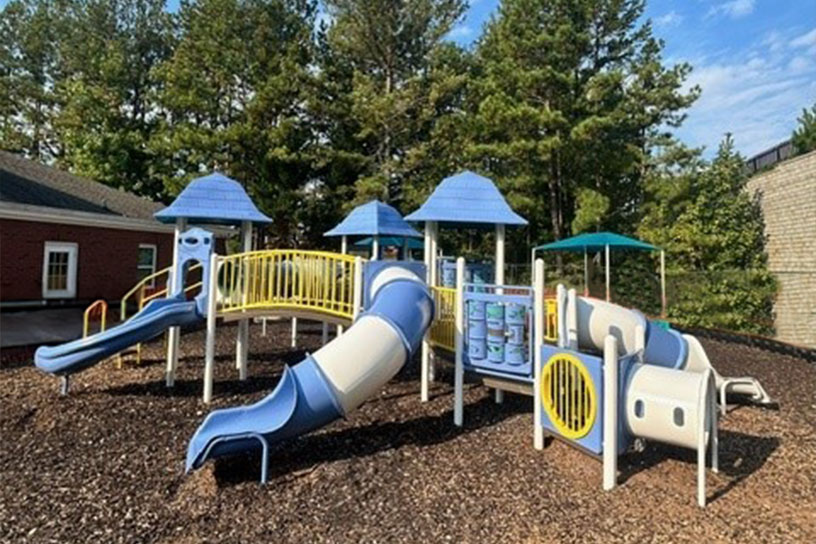Among the myriad of playground equipment, climbing structures stand out as some of the most popular and beneficial for kids. These structures, which include rock walls, jungle gyms, and rope climbs, offer children a chance to develop physical strength, coordination, and problem-solving skills. However, the very nature of climbing equipment—height, complexity, and frequent use—makes regular safety inspections crucial to ensure these structures remain safe and enjoyable.
The Importance of Regular Safety Inspections
- Preventing Accidents and Injuries: Regular safety inspections are essential to identify and rectify potential hazards before they result in accidents. Climbing structures can develop wear and tear over time, leading to loose bolts, weakened ropes, and cracked surfaces. Inspections help in detecting these issues early, preventing injuries that could arise from faulty equipment.
- Ensuring Compliance with Safety Standards: Playgrounds must adhere to specific safety standards and guidelines set by organizations such as the Consumer Product Safety Commission (CPSC) and the American Society for Testing and Materials (ASTM). Regular inspections ensure that the climbing structures meet these standards, thereby reducing the risk of liability for playground operators and providing peace of mind for parents and caregivers.
- Extending Equipment Lifespan: Consistent maintenance and timely repairs identified during inspections can significantly extend the lifespan of climbing structures. By addressing minor issues promptly, playground operators can avoid more extensive damage that could lead to costly replacements.
Key Components of Climbing Structure Inspections
- Structural Integrity: Inspectors must assess the overall structural integrity of climbing equipment. This includes checking for rust, corrosion, and any signs of weakness in the materials. Metal structures should be free of sharp edges and burrs, while wooden components should be inspected for splinters, rot, and insect damage.
- Anchorage and Stability: Climbing structures must be securely anchored to the ground to prevent tipping or shifting. Inspectors should check the stability of the equipment, ensuring that it is firmly in place and does not wobble or sway when used.
- Hardware and Fasteners: Bolts, screws, and other fasteners should be tight and in good condition. Inspectors should look for missing or damaged hardware and replace them as necessary. Loose or missing fasteners can compromise the safety of the entire structure.
- Surface Materials: The surfaces of climbing structures should be smooth and free of cracks or holes. Inspectors should check for signs of wear and tear, such as worn-out grips or handholds, and ensure that all surfaces are safe for children to touch and climb.
- Protective Surfacing: The ground beneath climbing structures should have appropriate protective surfacing, such as mulch, sand, or rubber mats, to cushion falls. Inspectors should ensure that the surfacing is adequate in depth and coverage, and that it meets safety standards for impact attenuation.
Best Practices for Playground Operators
- Schedule Regular Inspections: Establish a routine inspection schedule based on the frequency of use and the age of the equipment. High-traffic playgrounds may require more frequent inspections to ensure safety.
- Train Staff: Ensure that staff or volunteers responsible for playground maintenance are adequately trained in safety inspection procedures. With the aid of our Playground Guardian app, your staff can easily manage, monitor and inspect any municipal, neighborhood or school playground system. Provide ongoing training to keep them updated on the latest safety standards and best practices.
- Document Inspections and Repairs: Maintain detailed records of all inspections and repairs. Documentation not only helps in tracking the maintenance history but also serves as evidence of due diligence in the event of an accident or liability claim.
- Engage Professional Inspectors: While regular inspections by staff are essential, it is also beneficial to engage professional playground inspectors periodically. Professionals, like our Playground Guardian inspection team, have the expertise and experience to identify potential hazards that may be overlooked by untrained personnel.
- Promote Awareness Among Users: Educate parents, caregivers, and children about playground safety. Encourage them to report any observed hazards or concerns promptly. A vigilant community contributes significantly to maintaining a safe play environment.
Climbing structures are a vital component of any playground, offering numerous benefits for children's physical and cognitive development. However, their complexity and frequent use necessitate regular safety inspections to ensure they remain in top condition. By adhering to stringent inspection protocols and maintenance practices, playground operators can create a safe, enjoyable, and welcoming environment for all children. At Playground Guardian, we are committed to helping you keep your playgrounds safe and secure, ensuring that every child can climb, explore, and play with confidence.





